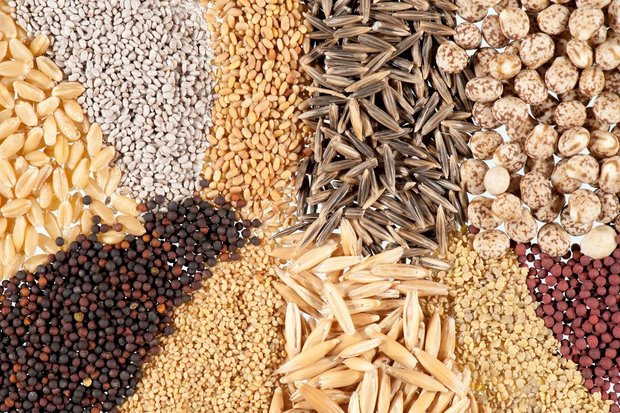The consequences of Agro-Trammy in Sphere of Food and Agriculture Trade

reports Mehr reporter , Hossein Shirzad, an agricultural development analyst in the US government, wrote about the impact on the world’s food trade, according to a new report by” Robobank “The consequences of Trump’s return to world food and agriculture, the fact that Trump’s return and the change of policies that result are a sophisticated prospect for the World Food and Agriculture Trade .
consequences of these changes include potential disorders in stabilized business relationships, changes in export demand and increased costs for consumers and businesses alike, with the subtle balance that inflation inflation It will highlight the consumer behavior and the dynamics of international trade in the future. Trump’s return may shake world agricultural markets in the year 6, probably creating a new business order. In year 4, the international agricultural market saw a significant decline in the prices of major grains, oilseeds and sugar, while tropical products such as cocoa, coffee and palm oil faced rising prices. In contrast to this background, farmers around the world enter the new year among the growing dangers of climate change and geopolitical uncertainties.
After two to three decades of globalization, the world is now transition to the stage of economic and political deregulation. This change accelerated in year 6 and is expected to intensify in the coming years. Some experts guess that Trump’s potential victory in the United States could be a definitive turning point in the borders of the and show the end of globalization. However, the impact of Trump’s policies is certainly far beyond US borders and potentially changes the prospect of global agriculture.
Trump has repeatedly said that he intends to impose tariff imports, his words, agricultural industry to retaliate Possible business partners against its products are ready. His ongoing warnings about tariffs on different countries may cause retaliatory tariffs by even European allies. This policy can reduce farmers’ profit margins because they try to stay in the international market.
, in fact, the cornerstone of Trump’s proposed policies for agricultural trade, the implementation of global tariffs on imports is tariff 2 A percentage applies to Chinese goods. This offensive position has brought a wave of shock to the agricultural community. Trump’s proposed global tariff on imports of US goods and the potential 5 % tariff on Chinese goods will probably lead to retaliatory tariffs from China and other affected countries. The US -China agricultural trade accounts for more than 5 % of global soybean exports, which is potentially changed by Trump’s new policies.
US Business War / Span>
These measures, along with the expected strengthening of the US dollar, negative impact on US food and agriculture exports It will have. During the trade war with China, Trump gave farmers a lot of money to offset their losses, as exports to China declined sharply. Trump pledged to act more firmly about China this time and called for a 5 % tariff on Chinese goods. Since 2008, the US share of China’s soybean imports has fallen from 2 percent to 5 percent since Trump has imposed $ 5 billion of Chinese goods and China retaliated. In parallel, according to China’s customs data, Brazil’s share increased from 2 % to 5 %.
China has also bought more soy than Argentina, Ukraine and Australia. The Chinese are sitting on the unprecedented strategic reserves of Sevilla, giving them leverage in business negotiations. At the same time, they rely more on Brazil. They may not need the United States, they are moving away from the United States and meeting their needs in the short term. For Brazil, tensions between the United States and China could increase the exports of Brazilian soybean and corn. It can also be more opportunities for export of beef and… that Brazil has to China.
Brazil’s role in the food trade
for geopolitical reasons, Brazil has begun exporting more corn to different countries and in some cases from the United States It surpasses. Therefore, Brazil can again benefit from the intensification of the US -China trade war, while Europe, Africa and Southeast Asia may have limited and managerial negative effects depending on the level of commercial disorders and compatibility and flexibility of specific value chains. Span>
European companies can significantly reduce their exports to the United States and retaliatory measures Apply that may become a wider commercial conflict. On the other hand, Trump’s policies to strengthen the US dollar and reduce US competitiveness in world markets will benefit the export of cereals, oilseeds, dairy and beef and New Zealand. But the increase in US import tariffs on countries with a large trade surplus with the United States creates negative economic pressure on these exporters because they strongly rely on exports to the United States.
in Year 2, the United States of Agriculture worth $ 5 billion including fruits and vegetables, sugar, Enter cheese, vegetable oils, coffee and cocoa. Experts predict that Trump may impose a 2 to 5 percent tariff on all imported goods in his first 7 days, and tariffs on China’s imports can potentially reach 5 %. This probably leads to retaliatory tariffs against the United States that affects the export of agricultural products. Regarding the China case, China, one of the major buyers of the United States, bought 5 % of US agricultural exports in year 6. That year, the United States had $ 5 billion in agricultural exports. Therefore, it is possible that the tariff war with China can reduce the export of US agricultural products by half by half. In the past two years, however, China’s retaliatory tariffs have reduced US agricultural revenue by 5 %, as China is increasingly supplying its imports from other countries.
is expected to affect China’s retaliatory tariffs on American soybean exports, as Sevilla’s largest agricultural export is in the country It is China. Over the past year, soybean prices in international markets have fallen by 5 %. As a result, any further action by China will exacerbate the losses for soy farmers in the United States. However, if the trade agreement between the United States and the EU (EU) reaches, the EU could transfer soybean and soybean flour imports from South America to the United States. In year 2, when Trump imposed tariffs on China, China retaliated and reduced the US share of soybean imports from 2 % to 5 %. During this time, Brazil’s share increased from 2 % to 5 %.
China also increased purchases from Argentina, Ukraine and Australia. A similar scenario may occur this time. In the world wheat market, Russia has appeared as a major supplier and applies significant control over prices. Previously, China was the biggest buyer of US agricultural products, but in the first period of Trump, tariff policies led China to supply large amounts of grain and soybeans from South America and Russia.
experts emphasize that China prioritizes supply guarantees over price considerations. Agricultural trade will still be influenced by geopolitics and will reduce US exports. Ghosts close to trade wars and tariffs lead to a possible disorder in US food and agricultural exports, and the risk of intensifying trade wars affects various political economic sectors. In principle, uncertainty in world markets leads to price fluctuations; In addition, the impact of these policies can be especially for key goods such as soybeans, corn and wheat.
at the recent Brix Summit in Kazan, Russia offered to create a new international cereal stock exchange aimed at reducing reliance on It gave the Western markets- Delighting. Despite their essential role in world agricultural trade – production and consumption of 5 % of the world’s grains and 2 % of global grain exports – there is no international exchange in Brix countries. They are dominant in rice exports (2 %), wheat (2 %) and corn (2 %).
may face challenge in polar geopolitics, the United States and the European Union. BRICS countries produce most nitrogen, phosphorus and potash used in fertilizers, and G2 countries have limited access to phosphorus.
In the final image, tariff changes can affect up to 5 % of US agricultural exports That is the value of the annual business is billions of dollars. According to USDA statistics, the United States imports approximately 2 percent of fresh fruits and 2 percent of its vegetables. Therefore, imported tariffs can make access to these commodities more difficult and target, apart from low -income families, crumbs farmers and agricultural companies in at least five countries in agricultural trade with the United States. The impact on soybean export markets is more important because the Sevian Seed is at the forefront of the US -China agricultural trade relations and any change in politics can have profound consequences for this vital product.
China’s potential for retaliation tariffs can significantly disrupt consolidated business patterns and manufacturers To force America to search for alternative markets. Key considerations for the soybean market, such as the possible loss of market share in China for competitors such as Brazil, will have the need to diversify export purposes a negative impact on domestic soybean prices and farm income.
Also, the dynamics of the US-China agricultural trade and relationships between the United States and China in shaping the trade The world of agriculture is especially important. In the first period of Trump, we saw significant fluctuations in this important partnership that China’s retaliatory measures led to a significant decline in soybean imports from the United States and allowed Brazil to have a significant market share of the market. The United States in key cereals markets, opening opportunities for competing countries to fill the vacuum through global supply chains and business routes, changes in supply and demand for major products, logistics and infrastructure pressure in emerging countries, and the possibility of unity emergence. And new business agreements are part of these developments. While much focusing on US-China relations, the potential re-negotiation of the US-Mexico-Canada Agreement (USMCA) adds another layer of complexity to the prospect of Trumpism Agricultural Trade.
Trump threats to impose tariffs on Canadian and Mexican goods can disrupt the complex network of North American trade relations. The US, Mexico and Canadian Agreement (USMCA) is another area of concern for the global agriculture sector, as it will be re -negotiated in the next two years. Mexico and Canada are the largest trade partners in the United States and are among the world’s cereal market participants. Let us not forget that the impact of tariffs on commodities will vary in the case of exports from Europe to the United States. While European exporters may attract some increases, higher tariffs such as 2 % or non -tariff barriers can significantly trade through supply chain disorders and logistics networks, transboundary agricultural job challenges, changes in the pattern Disrupt the production of regional and specialized product. Therefore, with the revelation of these dynamics, farmers and agricultural jobs need tools for rapid adaptation to variable market conditions with high costs.


